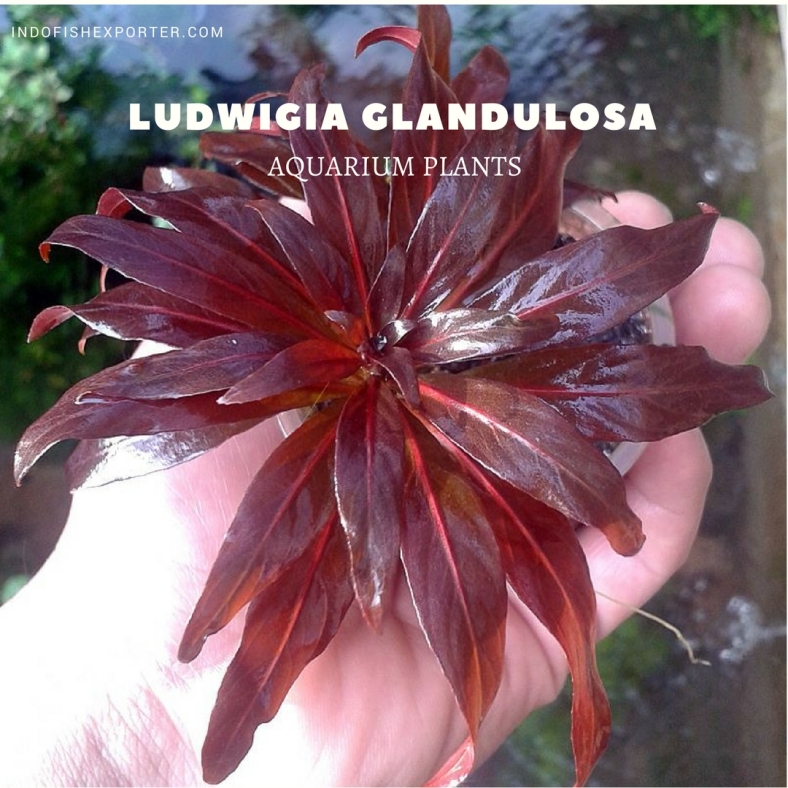
Send your inquiry of Ludwigia Glandulosa to our email :
indonesiafishexporter@gmail.com
Two subspecies of the cylindric-fruited primrose willow, Ludwigia glandulosa (ssp. glandulosa and ssp. brachycarpa) are found in most of the southeastern states of the USA. To the north its area of distribution extends to Illinois and Indiana. It prefers wetlands, but also wet road ditches. Despite its large distribution it is considered endangered to critically endangered in Indiana and Louisiana.
In the trade, it is often found under the erroneous name of “Ludwigia perennis”, which is not a synonym for L. glandulosa but the name of another species found in Asia, Africa and Australia. It is also often sold under the trade name of “Ludwigia peruensis”, obviously deriving from “perennis”.
L. glandulosa has lanceolate alternate leaves (1 leaf per node). The submersed stems grow strictly upright and hardly ramify, whereas the land form develops creeping runners as well as upright, ramified shoots up to 80 cm in height. During summer (or long-interval lighting), inconspicuous green, petalless flowers develop in their axils.
Ludwigia glandulosa is not easy in culture. If the light is not intensive enough, its leaves first turn green and are then shed. Even under lots of light the plant tends to shed its lower leaves. A good micronutrient supply, paired with sufficient iron as well as very strong light is a must for this plant.
Given that these conditions are met, L. glandulosa has no further high requirements. It doesn’t need especially high levels of nitrate or phosphate; these macronutrients should be present, though. Experience shows that it grows very well when the concentration of NO3 is 5-25 mg/l and the PO4 concentration is 0.1-3 mg/l. In contrast to many other red-leaved plants, L. glandulosa does not require low levels of nitrate to keep its reddish colour.
Unlike other Ludwigia species, the submersed form of L. glandulosa hardly ramifies at all. It grows straight to the water surface and further, without developing lateral shoots. To induce their formation it is necessary to cut off the central shoot.
Its intensive colour makes L. glandulosa an ideal accent plant for aquaria. The strong reddish-purple colour of the leaves is a real eyecatcher. Its relatively slow growth and its upright habit make it an optimal plant for so-called plant roads in Dutch tanks.